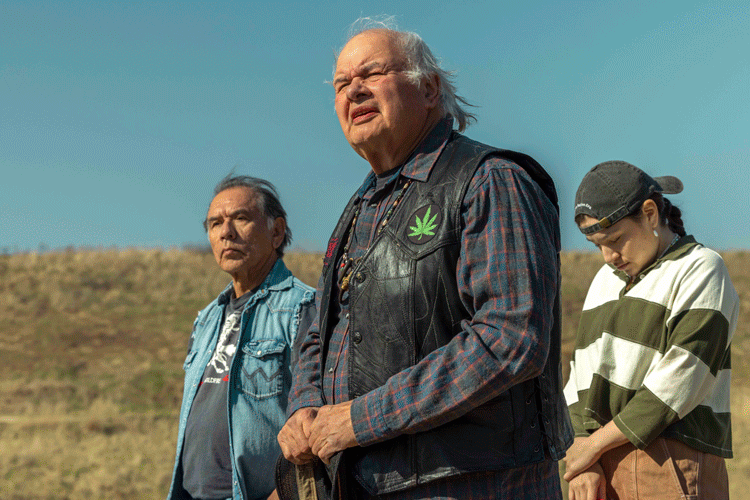Are Those Pro-Social Messages Just Getting Lost in the Mix?
- Share via
President Clinton appeared on more than two dozen channels Wednesday night, and he wasn’t even explaining the United States’ latest military action or what his definition of “is” is.
Rather, the president was seen in a 30-second commercial that was “road-blocked”--airing simultaneously across multiple broadcast and cable networks--simply urging parents to talk to their kids about violence. It’s a strategy that has been used in connection with other child-friendly initiatives, including a 1990 anti-drug special for kids, “Cartoon All-Stars to the Rescue,” which played on all the network Saturday morning lineups.
Orchestrated by the Advertising Council, Children Now and the Kaiser Family Foundation, this latest public-service announcement (or PSA) represented the kind of goodwill gesture sure to elicit enthusiastic cooperation from the entertainment industry--launched, as it was, around a White House photo-op allowing some executives to rub elbows with First Lady Hillary Rodham Clinton.
Timed to coincide with students returning to classes at Columbine High School (and missing the irony that those kids passed through a gantlet of TV cameras to get there), the event highlights how television tries to foster positive images and attitudes--a counterpoint to those convinced the medium only poisons young minds. Yet in a larger context, what such efforts can’t address is how well these “pro-social” messages are heard over the conflicting din of media.
Advocacy groups would like to see television devote more time to public service, including the integration of messages into programs themselves. What better way to influence behavior, they say, than have Bill Cosby pause to snap on his seat belt, or Norm make a point of not driving home after tossing back a few cold ones at Cheers.
Entertainment programs do delve into weightier areas, as demonstrated by ABC’s comedy “The Hughleys,” which recently taped an episode focusing on the danger associated with gun ownership. Set to air when the series begins its second season on Sept. 24, the story has the lead character, played by D.L. Hughley, getting a scare when he discovers his kids were playing with a gun he keeps in the house.
Not content with the treatment such issues receive within news programs, many advocates feel this is the ideal way to make an impression on viewers--a spoonful of sugar, as it were, to help the medicine go down. Some producers agree.
“The episode is a PSA, in a way,” said Bob Greenblatt, one of “The Hughleys’ ” executive producers. “It’s just a really timely topic. It’s not pro-gun or anti-gun, but it does get discussed.”
For the most part, however, producers--besieged by groups pushing one cause or another--view tackling such matters as cumbersome. While exploring issues occasionally makes sense within the context of a show, many find it hard enough being funny or dramatic each week without passing along life lessons as well.
Enter the networks, which, in recent years, have found a way to offer old-time public service, but with a new twist: Because air time and advertising inventory are more precious due to dwindling ratings, PSAs are now designed not only to promote a particular cause but the network and its stars.
NBC’s “The More You Know” campaign features network regulars preaching all kinds of laudable aims, from racial tolerance to more patient parenting. ABC came up with Children First, showcasing its on-air talent to discuss various child-related concerns. Fox airs anti-drug and anti-violence spots, using cast members from “Ally McBeal” to deliver the pitch.
“I think they recognize that there is a responsibility,” said Peggy Conlon, the new president of the Ad Council, during a recent trip to Hollywood to meet with network and studio executives. “I’m really encouraged. I think there’s an opportunity for the Ad Council to bring a little bit more clarity and organization to this effort, which everybody wants to do.”
As for letting networks incorporate a bit of self-promotion into the mix, Conlon sees little down side as long as the net result gets the word out.
“It allows them to have another level of connection with their audience and still have air time that they might not have otherwise been able to find for public service,” she said. “I don’t view that cynically at all. I view that as their solution to the fact that the time once devoted to public-service ads has really gone away.”
More difficult to ascertain is the impact public-service campaigns have, especially when the programming that surrounds them often appears to undermine the goals they establish.
Fox, for example, ran anti-drug spots following its nostalgic sitcom “That ‘70s Show,” which regularly depicts obviously stoned teenagers (it is the ‘70s, after all) hanging out--and giggling an awful lot--in a smoke-filled basement. More subtly, how do teenage girls respond to PSAs promoting the merits of self-esteem and “liking yourself for who you are” when they are juxtaposed against the steady barrage of gorgeous young flesh that passes for the norm on such programs as “Dawson’s Creek” and “Buffy the Vampire Slayer”?
Even last week’s road block hit a few potholes, running in the action-oriented series “Martial Law” and “7 Days,” neither a stranger to violence. Those not viewing the ad, meanwhile, could find “Walker, Texas Ranger” in a rerun on USA, or the ultra-violent film “Starship Troopers,” uncut, on the pay service Showtime.
Channel One, an in-the-classroom news service that reaches 8 million middle-school students daily, regularly attempts to inform kids about issues ranging from sex to the futility of violence and hate; still, Channel One President Andy Hill worries about contradictory messages youths encounter elsewhere--from violent TV and video games to turning Dennis Rodman, who revels in his anything-goes persona, into a commercial spokesman.
“It is paddling upstream with a teaspoon, in terms of the messages they get that are exactly opposite [more positive lessons about] how they should behave,” said Hill, a former CBS executive.
Clearly, much good is accomplished by organizations such as the Ad Council, just as there are plenty of TV programs that kids, and their parents, should be encouraged to watch. Unfortunately, calm reflection about television’s sundry benefits is easily forgotten as more dubious images streak by us and, predictably, each time a once-serene neighborhood is awakened by the sound of gunfire.
*
Brian Lowry’s column appears on Tuesdays. He can be reached by e-mail at brian.lowry@latimes.com.
More to Read
The complete guide to home viewing
Get Screen Gab for everything about the TV shows and streaming movies everyone’s talking about.
You may occasionally receive promotional content from the Los Angeles Times.






